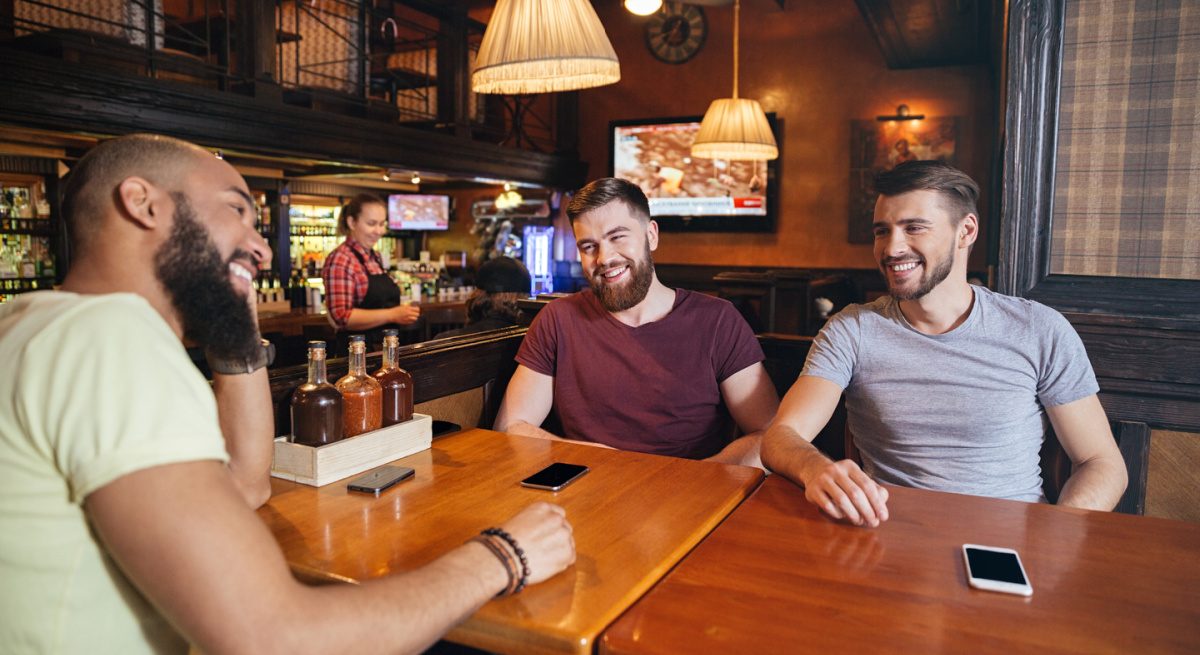As Pandemic Lingers, Adding Good Communication to the Menu Can Reduce Customer Concerns
5 Min Read By Rod Hughes
Restaurants looking to avoid being 86’ed by the pandemic and its economic fallout have work to do. The good news is, with a thoughtful and ongoing communications plan this work can be accomplished while also promoting the restaurant to new and existing patrons.
With COVID-19 continuing to be a consideration for consumers across the U.S., the restaurant industry needs to respond by sending a message to the public that it is — and will continue to be — safe to return.
Your Response Menu
Regardless of your restaurant’s chosen policies in response to the pandemic — and there are a wide range of approaches — your customers need to know what they can expect when visiting your establishment.
Both owned and earned media are available to nearly every restaurant that promotes itself to the public. These media should be leveraged to communicate in a style and voice that is authentic to your business and your policies so there is no guesswork on the part of your customers.
Owned media are simply communication channels the restaurant controls. They run the gamut, from signage at the host stand and the restaurant website, to the restaurant’s social media pages and customer email list or loyalty program. These forums give your restaurant the opportunity to control and disseminate messages to customers.
Earned media are things like local news stories about the restaurant, mentions in trade or travel stories about your region, online reviews, word of mouth and even mentions of your business on other people’s social media pages.
Today’s Pandemic Special
Regardless of where they stand on the myriad issues surrounding the pandemic, your customers want to know your policies so they can make informed choices. There are restaurants that have made the decision to operate with a pre-pandemic mindset and have made few, if any, operational changes that impact their customers. Others might be taking a graduated approach, from enhanced cleaning procedures to social distancing, to masking, limited outdoor dining, take-out only service or requiring proof of vaccination from all patrons.
In some instances, the restaurants have no choice. Local municipalities may dictate the policy.
Whatever the requirements, restauranteurs should clarify their policy using owned and, where possible, earned media. The best course of action for determining your policy is to follow the U.S. Centers for Disease Control and Prevention’s (CDC) guidelines, as well as local health department recommendations.
Whatever you opt to do, be consistent and educate your patrons. Lack of clarity in advance of an in-person visit can result in situations similar to a September 17, 2021 incident at Carmine’s in Manhattan. According to a local NBC affiliate, a group of tourists were filmed attacking a Carmine’s hostess after she allegedly informed the group COVID-19 vaccine cards were required for any indoor seating. The hostess was sent to the hospital with non-life-threatening injuries.
Of all the communications tools at your business’s disposal, none is more important or helpful as succinct signage explaining your policy, or in the case of Carmine’s, notice of the city’s COVID-19 masking ordinance. That signage needs to be large and prominent at the customer’s point of entry. Carmine’s signage was in relatively small print and well off to the left of the outdoor hostess stand on a busy sidewalk.
Food for Thought
A singular notice on Google Business or the restaurant’s social media channels won’t be enough to effectively communicate to the business’ clientele. A multi-channel and frequent approach is needed to ensure your policy is not only received but embraced.
Restaurants should create a messaging campaign to populate its website, Google Business account, social media channels and e-newsletter through a Customer Relationship Management (CRM) program, where practical. Any restaurant reward or loyalty program should have this messaging included as well.
The messaging should be updated and modified throughout the campaign to avoid being repetitive while still sending a consistent message. The frequency of communicating these messages is up to each restaurant. However, a good gauge for frequency can be communicating your COVID-19 safety and prevention efforts at least as frequently as you communicate your special menu additions.
Those messages can vary in tone and style, but the themes need to be consistent.
- Highlight steps you’ve taken to safely bring your employees back to work, and what that means for customers.
- Talk about any new or enhanced sanitation efforts at the restaurant.
- If you are requiring masks, you might want to share information about the frequency of staff testing, assuming not all employees choose to be vaccinated.
- You’ll then want to pivot to your customer-service messaging.
Some restaurants are even offering inexpensive and branded masks at the host stand or offering them as a thank you to patrons. These masks serve not only as helpful messaging tools, they also can serve as powerful marketing resources as well.
Another tactic is contacting local news outlets and inviting them to a behind-the-scenes tour of your location to talk about your COVID-19 policies. Offer to share insights on how your guests are reacting. And be prepared to talk about the financial impact of COVID-19, staffing and your prospects for success as the pandemic lingers. As fall turns to winter and diners move from outdoor dining to indoor, also consider speaking with the media to update them on how business has performed to date and your expectations as you prepare for the winter weather season.
Be Prepared for Backlash
Discussion of your COVID-19 policy might bring out a critic or two. Whatever your policies, there may be those who call into question how you’ve addressed the controversial issues surrounding the pandemic. Be prepared to respond with carefully considered messaging.
If the critics come — whether in person, online or through a media circus of their making, such as the Carmine’s example from New York — you’ll need to be prepared to respond thoughtfully to protect your business’ reputation as well as your bottom line.
A basic outline of two or three key points will act as your roadmap to speaking with irate patrons as well as the news media. Remain calm, don’t get into an argument and be sure to thank customers for sharing their opinions. Be sure to note you’ve made your decisions to ensure the continued success of your business and to allow your employees an opportunity to earn a living. This approach follows the basic tenets of all good customer service that restaurant veterans understand all too well.
This outline can help you with any media inquiries as well. Especially if you’ve engaged the media previously, any type of public or online protest is likely to draw media attention. Have a short statement prepared so you aren’t caught off guard. Never respond with “no comment.”
Regarding social media, your outline of key points is your guide here as well. But note, you want to do this in the conversational style that works best in this medium, and should not respond to every negative post beyond asking them to contact you with their concerns directly. If you have more than one or two comments, post a short statement explaining your policy and welcoming those who abide by it to dine with you. But don’t get into a back-and-forth.
Depending on the severity of those questioning your policies or reopening, you might find your restaurant is subjected to a rash of negative online reviews. Respectfully post a response asking those commenting to contact you offline so you can better understand and, possibly, resolve the matter. While most will not engage with you offline, this will demonstrate to the public that you are being proactive. In some cases, Yelp, TripAdvisor and other review sites may recognize a pattern of potentially false reviews and remove those in question. But you have to demonstrate on review sites that you are present and engaged.
Just Desserts
Done well, an effective communications campaign can help reduce some of the bitter taste left among your critics — and there are critics on all sides. The key is to create a messaging plan and then leverage your owned and earned media to get through the current rush of opinion and criticism. Restauranteurs who understand their customers know the importance of clear communications and must act accordingly to ensure the table is set for a long-awaited post-pandemic customer environment.


